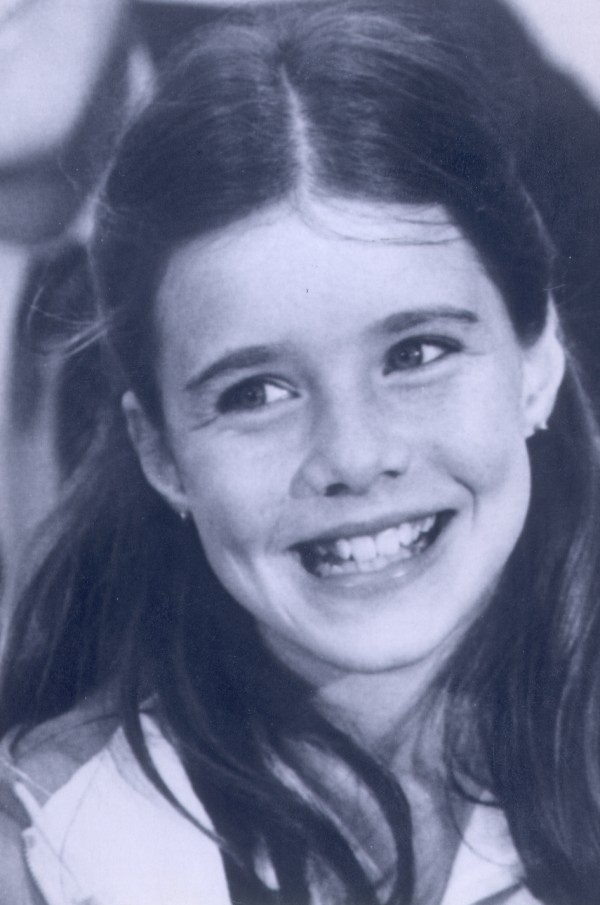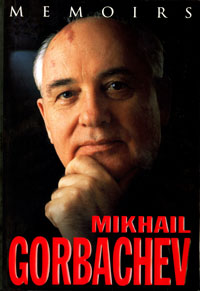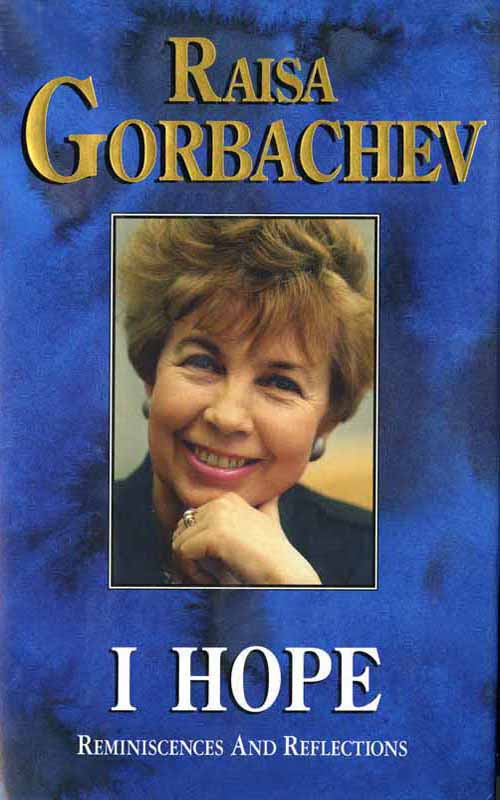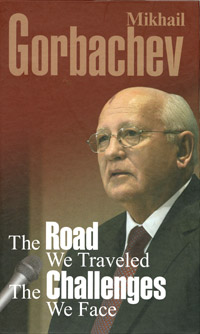18 July 2013
Lena Nelson. Mikhail Gorbachev reflects on America’s youngest ambassador, Samantha SmithThirty years ago, in the summer of 1983, 11-year-old Samantha Smith from Manchester, Maine, was the most famous little girl in the world. Images of a freckle-faced smiling Samantha holding a letter from the Soviet Premier Yuri Andropov and later touring the Soviet Union went out on all news wires. “Actually, the whole thing started when I asked my mother if there is going to be a war,” Samantha wrote in her book, “Journey to the Soviet Union.” “There was always something on television about missiles and nuclear bombs. … I remembered that I woke up one morning and wondered if this was going to be the last day of the Earth,” she wrote. In 1983 when I went to school on the other side of the Iron Curtain — in Arkhangelsk — my teacher used to describe what would happen when the nuclear blast hits, “We all will be like grains of sand, aimlessly strewn about.”
“Samantha Smith wrote her letter to Yuri Andropov at the moment when the Cold War has reached its peak. The Soviet and American leaders hadn’t had a meeting in years. Missiles that could reach their targets in five minutes of flight time were being deployed in Europe.” In response to her daughter’s question about war, Jane Smith showed Samantha a November 1982 Time magazine, with stern bi-spectacled Andropov gracing its cover. In it some U.S. experts were concerned about escalating U.S.-Soviet conflict; others saw “the transfer of power in the Kremlin [as] an opportunity to relieve tensions.” Samantha’s reaction: “If everyone is so afraid of him, why don’t they ask him if he is going to start a war?” “Why don’t you write to him?” suggested Jane. Samantha did just that. She penned a question that was on the minds of many adults, “Are you going to vote to have a war or not?” She addressed the envelope, “Mr. Yuri Andropov, the Kremlin, Moscow, USSR,” mailed it and soon forgot about it. When called to the phone in Secretary Peabody’s office at her Manchester Elementary School several months later, Samantha learned from an United Press International reporter that her letter was published in Pravda. Baffled as to why she didn’t receive a response, Samantha wrote another letter — to the Soviet Embassy in Washington, D.C. Andropov’s response arrived a little more than a week later. “It was the sincerity of Samantha’s letter that garnered attention,” continued Gorbachev. “We understood at the time that people on both sides of the ocean were very worried, and they wanted to make sure that their concern was felt by the leaders of USSR and USA. An American girl was able to express that in her letter.” By the time Samantha got home from school that day, her lawn was covered with reporters. By evening she and her mother were bound for New York for interviews on NBC and CBS. In his letter Andropov wrote that Soviets didn’t want to start a war. They were busy “growing wheat, building and inventing, writing books and flying into space.” And he invited Samantha’s family to visit USSR in the summer. On July 7, 1983, Samantha and her family departed for Moscow. Cheerful, blue-eyed Samantha seemed so unlike the “armed to the teeth Americans” that often appeared in Soviet political cartoons. Media crews from all over the world filmed her swimming with the Soviet kids at camp Artek and being a perfect diplomat as she visited the Red Square. Smith family’s tour was broadcast on the two available Soviet channels, and we were glued to the TV screens following the girl’s every move. For many of us in the Soviet Union Samantha and her family put a human face on the U.S. On the other side of the ocean, Americans got a rare glimpse of the Soviet Union. When two years later Samantha and her father were tragically killed in a commercial plane crash, I stood in front of my black and white TV stunned by fragility of life. Gorbachev, who by then was the new Soviet leader, sent a telegram to Jane Smith: “Everyone in the Soviet Union who has known Samantha Smith will forever remember the image of the American girl who, like millions of Soviet young men and women, dreamt about peace, and about friendship between the peoples of the United States and the Soviet Union.” President Ronald Reagan in his letter of condolences wrote, “Perhaps you can take some measure of comfort in the knowledge that millions of Americans, indeed millions of people, share the burdens of your grief. They also will cherish and remember Samantha, her smile, her idealism and unaffected sweetness of spirit.” “I was very concerned at the time with what was happening,” says Gorbachev on the 30th anniversary of Samantha’s trip, “and once I assumed the post of the General Secretary I immediately set out to renew contacts at the highest level. During his second presidential term, Ronald Reagan too understood that it was best to go down in history as someone who stood for peace, rather than for war.” Once, during one of the summits, Gorbachev recalls telling Reagan: “Mr. President, I have a feeling that our people have a better grasp of the situation and are able to come to an understanding sooner than you and I can. If this continues, they will fire us.” In October 1985, Jane Smith founded the Samantha Smith Foundation, which sponsored Soviet-American exchanges for the next decade. A statue of Samantha letting out a peace dove, with a bear sitting at her feet, now stands at the entrance of the Maine State Museum in Augusta. The Soviet government issued a commemorative stamp; a diamond, a mountain, a cultivar of tulips, and even an asteroid were given Samantha’s name. Following her trip Samantha wrote: “I mean, if we could be friends by just getting to know each other better, then what are our countries really arguing about? Nothing could be more important than not having a war if a war would kill everything.” “I feel,” says Gorbachev, “that was it not for Samantha’s tragic death she could have been an active participant in social change and do a lot of good.” Lena Nelson was born and raised in the former USSR, and in 2005 she developed www.SamanthaSmith.info in memory of her childhood hero. She has traveled extensively in the former USSR, Asia and the Middle East as a part of a nonprofit organization. She currently lives in Murrieta, Calif. CORRECTION: An earlier version of this OpEd listed Principal Peabody as who called Samantha Smith to her office at Manchester Elementary School. It was Secretary Peabody.
|
|
The XXI century will be a сentury either of total all-embracing crisis or of moral and spiritual healing that will reinvigorate humankind. It is my conviction that all of us - all reasonable political leaders, all spiritual and ideological movements, all faiths - must help in this transition to a triumph of humanism and justice, in making the XXI century a century of a new human renaissance.
|
|
Русский |
 When I set out to write a tribute to my childhood hero on the 30th anniversary of her trip to the Soviet Union, which is July 7-21, I contacted former President Mikhail Gorbachev — to find out whether he shared the sentiment of my generation about the effect Samantha’s short letter had on U.S.-Soviet relations. He poignantly described the timeliness of Samantha’s message:
When I set out to write a tribute to my childhood hero on the 30th anniversary of her trip to the Soviet Union, which is July 7-21, I contacted former President Mikhail Gorbachev — to find out whether he shared the sentiment of my generation about the effect Samantha’s short letter had on U.S.-Soviet relations. He poignantly described the timeliness of Samantha’s message:



